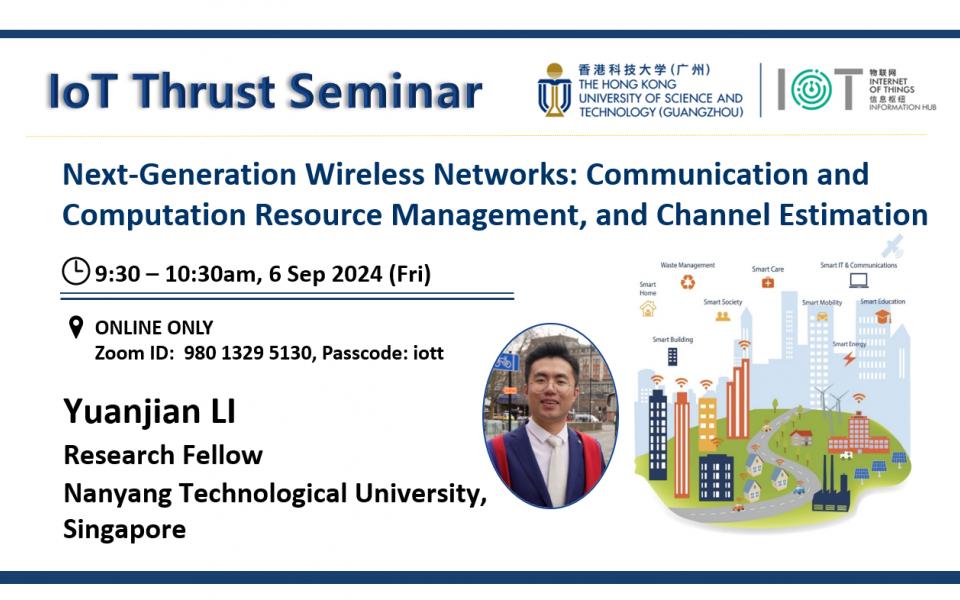IoT Thrust Seminar | Next-Generation Wireless Networks: Communication and Computation Resource Management, and Channel Estimation
Supporting the below United Nations Sustainable Development Goals:支持以下聯合國可持續發展目標:支持以下联合国可持续发展目标:
Wireless communication technologies are foundational to the functioning of key industries and the enhancement of modern life. Prime examples include Starlink by SpaceX, mobile communications via cellular networks, and the Internet of Things (IoT) applications like smart homes, telesurgery, and autonomous driving. These advancements are rapidly evolving, driven by cutting-edge technologies such as machine learning (ML) from artificial intelligence (AI). Looking ahead, next-generation wireless systems are expected to be AI-native. A key enabler of next-gen communications will be the space-air-ground integrated network (SAGIN), enabling seamless connectivity and ubiquitous coverage. Unmanned aerial vehicle (UAV)-aided non-terrestrial networks (NTN) will be central to the resilience and agility of SAGIN, thanks to their configurable mobility and flexible deployment. Moreover, ultra-massive multiple-input multiple-output (UM-MIMO) Terahertz (THz) communications that offer super-broad bandwidth and significant beamforming gains promise to help achieve Terabits per second (Tbps) transmission rate over long distances, which is deemed as another pillar of next-gen communications.
This talk will cover deep reinforcement learning (DRL)-enabled intelligent path planning for cellular-connected UAVs, and multi-agent DRL-empowered energy efficiency optimization for many-UAV-aided multi-access edge computing (MEC) systems in IoT scenarios. Besides, a batch-delayed online dictionary learning-aided Bayesian approach for compressive sensing (CS)-based UM-MIMO THz channel estimation will be involved, while a deep recursive unwrapping solution for wideband UM-MIMO THz channel estimation will be discussed. This talk will conclude with an overview of quantum ML for future wireless networks.
Yuanjian Li is now a Research Fellow at the Computer Networks and Communication Lab, the College of Computing and Data Science, Nanyang Technological University (NTU), Singapore. He earned his PhD degree in Telecommunications from the Centre for Telecommunications Research at King’s College London. Before joining NTU, he was a Research Assistant at the University of Warwick and a Research Associate at Heriot-Watt University. He has participated in various research grants funded by the National Research Foundation (NRF) Singapore, the Infocomm Media Development Authority (IMDA) Singapore, and the Engineering and Physical Sciences Research Council (EPSRC) from the UK. His research expertise and interests include artificial intelligence (AI)-native non-terrestrial communications (NTC), (scalable/multi-agent) deep reinforcement learning (DRL)-empowered radio and computing resource management for multi-access edge computing (MEC), machine learning (ML)-aided and/or compressive sensing (CS)-enabled channel estimation for ultra-massive MIMO (UM-MIMO) Terahertz (THz) communication systems, physical layer security, and covert communications. He has authored over 20 papers in the interdisciplinary domain of these research areas in top-tier journals and prestigious conferences including IEEE TWC, IEEE TCOM, IEEE GLOBECOM, and IEEE ICC. He is also an active reviewer for these journals, conferences and beyond. He has authored 9 CN patents in the fields of wireless communications and signal processing.
